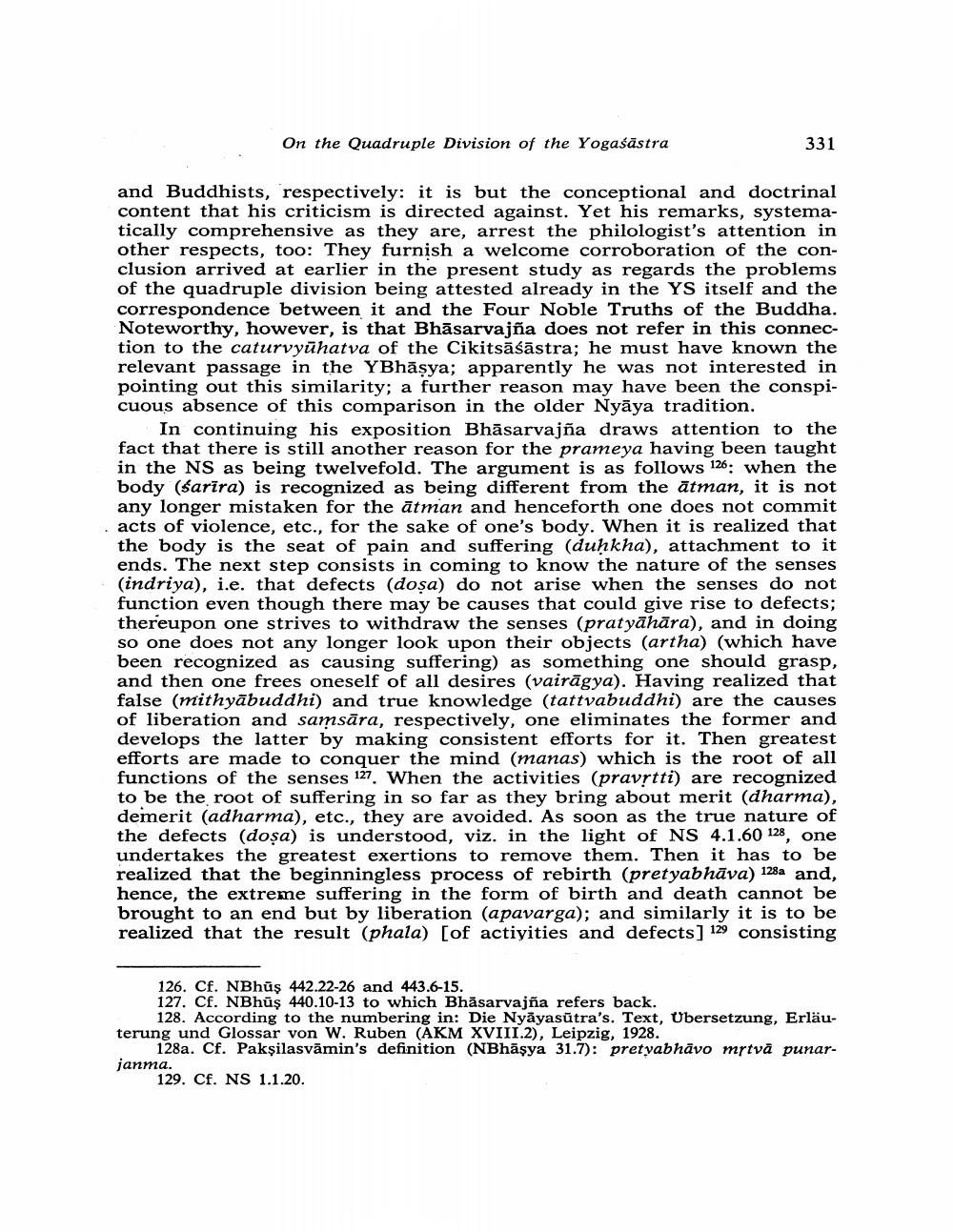________________
On the Quadruple Division of the Yogaśāstra
331
and Buddhists, respectively: it is but the conceptional and doctrinal content that his criticism is directed against. Yet his remarks, systematically comprehensive as they are, arrest the philologist's attention in other respects, too: They furnish a welcome corroboration of the conclusion arrived at earlier in the present study as regards the problems of the quadruple division being attested already in the YS itself and the correspondence between it and the Four Noble Truths of the Buddha. Noteworthy, however, is that Bhāsarvajña does not refer in this connection to the caturvyūhatva of the Cikitsāśāstra; he must have known the relevant passage in the YBhāsya; apparently he was not interested in pointing out this similarity; a further reason may have been the conspicuous absence of this comparison in the older Nyāya tradition.
In continuing his exposition Bhāsarvajña draws attention to the fact that there is still another reason for the prameya having been taught in the NS as being twelvefold. The argument is as follows 126: when the body (sarira) is recognized as being different from the ātman, it is not any longer mistaken for the ātman and henceforth one does not commit acts of violence, etc., for the sake of one's body. When it is realized that the body is the seat of pain and suffering (duḥkha), attachment to it ends. The next step consists in coming to know the nature of the senses (indriya), i.e. that defects (dosa) do not arise when the senses do not function even though there may be causes that could give rise to defects; thereupon one strives to withdraw the senses (pratyāhāra), and in doing so one does not any longer look upon their objects (artha) (which have been recognized as causing suffering) as something one should grasp, and then one frees oneself of all desires (vairāgya). Having realized that false (mithyābuddhi) and true knowledge (tattvabuddhi) are the causes of liberation and samsāra, respectively, one eliminates the former and develops the latter by making consistent efforts for it. Then greatest efforts are made to conquer the mind (manas) which is the root of all functions of the senses 127. When the activities (pravrtti) are recognized to be the root of suffering in so far as they bring about merit (dharma), demerit (adharma), etc., they are avoided. As soon as the true nature of the defects (doșa) is understood, viz. in the light of NS 4.1.60 128, one undertakes the greatest exertions to remove them. Then it has to be realized that the beginningless process of rebirth (pretyabhāva) 128a and, hence, the extreme suffering in the form of birth and death cannot be brought to an end but by liberation (apavarga); and similarly it is to be realized that the result (phala) [of actiyities and defects] 129 consisting
126. Cf. NBhūş 442.22-26 and 443.6-15. 127. Cf. NBhūş 440.10-13 to which Bhäsarvajña refers back.
128. According to the numbering in: Die Nyāyasūtra's. Text, Ubersetzung, Erläuterung und Glossar von W. Ruben (AKM XVIII.2), Leipzig, 1928.
128a. Cf. Paksilasvāmin's definition (NBhāşya 31.7): pretyabhāvo mrtvā punarjanma.
129. Cf. NS 1.1.20.




